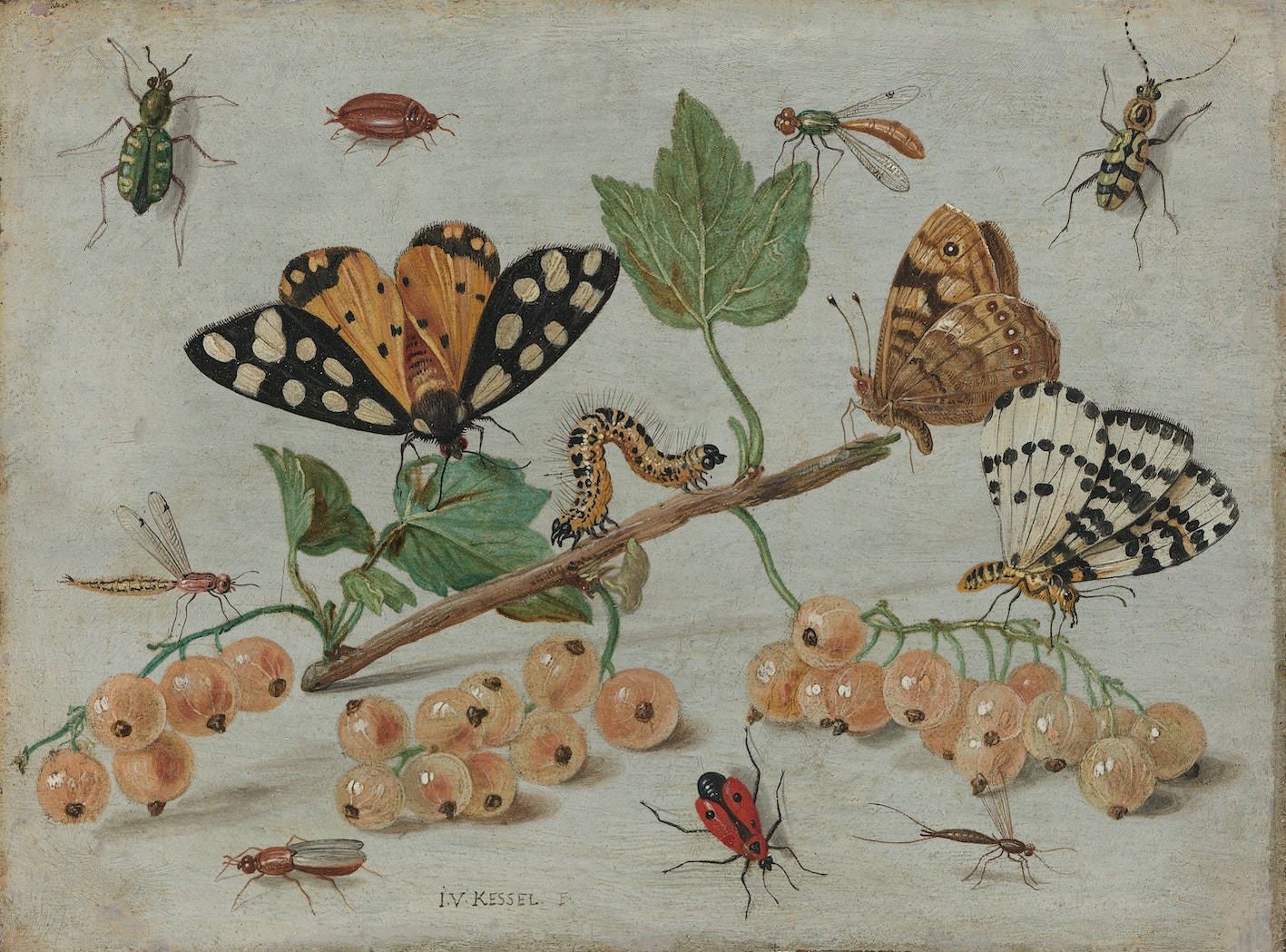Interested in working on this research direction? Apply for our coaching
Want more context on this profile? Explore a map of all our profiles →
This profile is tailored towards students studying biological sciences and philosophy, however we expect there to be valuable open research questions that could be pursued by students in other disciplines.
Why is this a pressing problem?
The black soldier fly (Hermetia illucens) is projected to become one of the most farmed insect species in the coming decades, with trillions of larvae projected to be raised for slaughter each year. Yet little is known about the capacities of these animals for sentience or suffering. If more information about the black soldier fly’s behavior, physiology, and neurobiology indicates suffering under farmed conditions or in the process of slaughter, that information may make it possible to influence farmed welfare regulations and discover and promote methods of humane rearing and slaughter.
See the talk below for researcher Stijn Bruers’s introduction to indications of insect sentience.
Explore existing research
- Barrett, Meghan & Bob Fischer (2022) Challenges in Farmed Insect Welfare: Beyond the Question of Sentience, Animal Welfare
- Barrett, Meghan, et al. (2022) Impacts of Development and Adult Sex on Brain Cell Numbers in the Black Soldier Fly, Hermetia illucens L. (Diptera: Stratiomyidae), Arthropod Structure & Development
- Barrett, Meghan, et al. (2022) Welfare Considerations for Farming Black Soldier Flies, Hermetia illucens (Diptera: Stratiomyidae): A Model for the Insects as Food and Feed Industry, Journal of Insects as Food and Feed
- Birch, Jonathan (2020) The Search for Invertebrate Consciousness, Noûs
- Gibbons, Matilda, et al. (2022) Can Insects Feel Pain? A Review of the Neural and Behavioural Evidence, Advances in Insect Physiology
- Gjerris, M., C. Gamborg, & H. Röcklinsberg (2016) Ethical Aspects of Insect Production for Food and Feed, Journal of Insects as Food and Feed
- Kortsmit, Y., et al. (2022) Behaviour of Two Fly Species Reared for Livestock Feed: Optimising Production and Insect Welfare, Journal of Insects as Food and Feed
- Read the EA Forum summary here.
- Sheppard, D. Craig, et al. (2002) Rearing Methods for the Black Soldier Fly, Journal of Medical Entomology
- Van Huis, A. (2021) Welfare of Farmed Insects, Journal of Insects as Food and Feed
Below is some further reading that may be useful to explore if you’re interested in learning about insect welfare and sentience:
- Why should I care about insects? – Jamie Gittins
- The Promise and Perils of Insect Farming – Open Philanthropy Farm Animal Welfare Newsletter
- Invertebrate sentience: A review of the neuroscientific literature – Jamie Gittins
- Insects raised for food and feed — global scale, practices, and policy – Abraham Rowe
- Insect Farming: Adding Up To Global Suffering? – Faunalytics
- Invertebrate welfare cause profile — Rethink Priorities
- Erens et al. 2012, Farmed invertebrate welfare consideration guidelines
- Ensuring high standards of animal welfare in insect production – International Platform for Insects as Food and Feed (IPIFF), 2019.
- Next Steps in Invertebrate Welfare Research – Waldhorn 2019
- Next Steps in Invertebrate Welfare Intervention – Waldhorn 2019
Find a thesis topic
If you’re interested in working on this research direction, below are some ideas on what would be valuable to explore further. If you want help refining your research ideas, apply for our coaching!
- Studying the behaviors and survivorship of H. illucens in the wild would fill a gap in the literature and provide indications of what behaviors and conditions are natural to them. This could give an indication of whether farmed conditions are comfortable for them, and in particular whether they are too densely crowded. It would also be valuable to estimate the length and variance in their life cycle outside of captivity, and determine larval survivorship to adulthood and causes of larval mortality. See here for more details on this project idea.
- H. illucens is a dipteran, in the same order as powerhouse model insect Drosophila melanogaster. Comparatively, more much is known about the cognitive sophistication of D. melanogaster as well as their capacity to suffer, and this information could be leveraged to assess the capacities of H. illucens. Holly Elmore has developed a project (see the mini-proposal on the EA Forum) for imaging the brain of H. illucens larvae and comparing it to that of D. melanogaster larvae, where much research has already established a link between brain structure and function, including in the context of nociception.
- In addition, Barrett et al. (2022) lays out the following urgent future research directions for the study of farmed black soldier fly welfare:
- Studies of adult mating, ovipositing, and foraging behaviours in natural vs farmed settings, to better understand the impacts of captivity on adult behaviour.
- Studies that address the impacts of cage densities on the behaviour and welfare of adults.
- Determining the nutritional preferences of adults, and the impacts of different diets on longevity, behaviour, reproduction, and welfare. (A study on this is already underway in a lab, however there would be room for collaborative work; contact Meghan Barrett if you’re interested in researching BSF welfare and adult nutrition and if you want to check in on what work is already being done to avoid overlapping effort.)
- More controlled studies of the welfare impacts of abiotic variables, nutrition, and their interactive effects on larvae, at the scale typically used by the industry (or expected to be used as the industry grows).
- Controlled studies on population-level variance in the impacts of abiotic conditions or nutrition.
- Studies that determine sublethal impacts of handling and abiotic factors on welfare (e.g. looking at stress hormone levels).
- Studies that identify probable parasites/pathogens associated with BSF and their welfare impacts, particularly prior to epizootic disease outbreaks.
- Studies that address the impacts of low-nutrient-content substrates on lethal and sublethal larval welfare at different rearing scales.
- Studies that assess the effectiveness of starvation/washing pre-slaughter procedures in reducing product microbial contamination levels of BSFL reared on different substrates (such as manure). If these pre-slaughter procedures are determined to be effective in any particular case, these studies may develop guidelines to minimise larval stress.
- Studies that determine the pre-slaughter stress caused by each slaughter method, as well as pain experienced during slaughter, and the time each method takes to kill (or knock unconscious) all individual organisms, in order to develop humane SOPs.
- Studies that determine the most humane methods of rendering insects unconscious (e.g. anaesthetics), which may reduce larval suffering prior to death. In addition, the impacts of these processes on the final product should be determined
- Studies on the sentience and capacity for nociception/pain in BSFL would also be valuable. Some studies are already underway for developing H. illucens larvae as a new model system for chronic pain; contact Meghan Barrett ([email protected]) to check in on novel future research directions here to avoid duplicating effort.
- Barrett & Fischer in Challenges of Farmed Insect Welfare (2022) bring up a future area of philosophical research: “The availability of insect protein raises questions about how to make trade-offs involving different species, with different probabilities of sentience, and radically different numbers of farmed individuals…It is important, therefore, to develop decision-making frameworks for such trade-offs that allow stakeholders to consider the importance of several factors: the number and kinds of individuals affected, the size and severity of the welfare impacts, and indirect effects on, e.g., sustainability goals.”
- Some example trade-offs:
- Using insect protein to replace fishmeal, where the welfare impacts of the IAFF industry rearing a large number of insects must be compared to the effects of commercial fishing operations rearing a smaller number of fish
- Using insect protein to feed other livestock, where there have been welfare benefits reported for fish, chickens, and pigs consuming BSFL (against the negative welfare impacts of the industry on the BSFL)
- Assessing the sustainability (or economic development) benefits of insect farming vs. its welfare costs, in addition to the potential welfare benefits of sustainable agriculture for human and wildlife welfare
- Some example trade-offs:
Further resources
Effective animal advocacy resources from Rethink Priorities links to many suggestions for further reading, research repositories, blogs, conferences and more that can help you get started on research into animal welfare.
Meghan Barrett studies BSF welfare and sensory neurobiology. She has several academic contacts she may recommend, who might be willing to supervise specific empirical and non-empirical BSF welfare projects. In addition, Barrett is aware of the ongoing research on BSF welfare and sentience – she can help advise on projects that may already be underway in academia.
You can also apply to join the Effective Thesis community if you’re interested in peer connections with others working in this area.
Our funding database can help you find potential sources of funding if you’re a PhD student interested in this research direction.
Sign up for our newsletter to hear about opportunities such as funding, internships and research roles.
Contributors
This profile was last updated 02/12/22. Thanks to Holly Elmore for first creating this profile, and Meghan Barrett for assistance in updating it. All errors remain our own. Learn more about how we create our profiles.
Subscribe to the Topic Discovery Digest
Subscribe to our Topic Discovery Digest to find thesis topics, tools and resources that can help you significantly improve the world.




